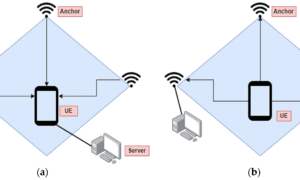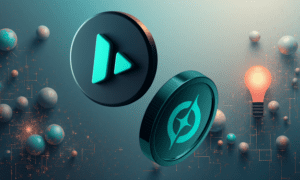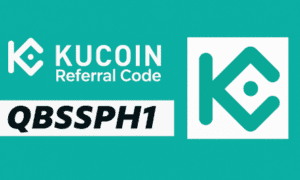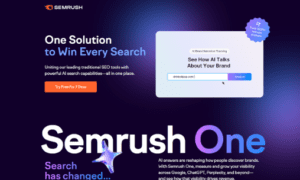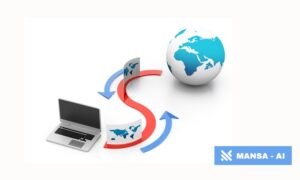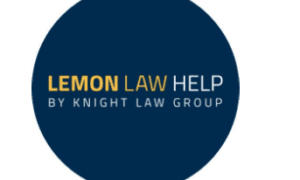Product presentations have evolved dramatically in the digital age. Webinar formats have emerged as one of the most effective methods for showcasing products to potential customers. This evolution is underscored by the fact that businesses utilizing content marketing, including webinars, experience conversion rates six times higher than their competitors. They combine the personal touch of face-to-face presentations with the scalability and convenience of digital technology. Unlike traditional sales presentations, webinars create interactive experiences that engage prospects while building trust and credibility.
The webinar format offers unique advantages for product presentations that other methods simply cannot match. They provide real-time interaction, allow for detailed demonstrations, and create opportunities for immediate feedback and question handling. This combination of features makes webinars particularly powerful for complex products that require explanation or demonstration to fully appreciate their value.
This comprehensive guide will show you how to leverage the webinar format for maximum impact in your product presentations. We’ll cover everything from initial planning through post-webinar follow-up. You’ll learn to create compelling presentations that convert prospects into customers effectively.
How to create a webinar that converts prospects
When you run a webinar for product presentations, you’re building a powerful sales tool that reaches multiple prospects simultaneously. The process requires strategic planning, compelling content development, and technical execution that supports your business objectives. Unlike educational webinars, product-focused presentations must balance information delivery with persuasive elements that drive purchasing decisions.
The most successful product webinars follow proven conversion principles while maintaining authenticity and value delivery. They address prospect pain points, demonstrate clear solutions, and provide logical next steps that guide attendees toward purchase decisions. This approach builds trust while positioning your product as the natural choice for solving specific problems.
Understanding webinar formats for product presentations
Product-focused webinars differ significantly from educational or informational webinars in their structure and objectives. They’re designed to showcase specific products or services while addressing prospect concerns and demonstrating clear value propositions that lead to purchasing decisions.
The most effective product presentation webinars follow a structured format that includes problem identification, solution demonstration, social proof presentation, and clear next steps. This format allows prospects to understand not just what your product does, but why they need it and how it will improve their specific situation.
Successful product webinars balance educational content with promotional elements throughout the presentation. Rather than delivering pure sales pitches, they provide valuable information while naturally demonstrating how the product solves real problems. This approach builds trust while positioning your product as the logical solution to attendee challenges.
Benefits of webinar format vs other methods
Webinars provide unmatched scalability for product presentations, allowing you to reach hundreds or thousands of prospects simultaneously. Notably, AI-powered webinar pages have been shown to boost conversion rates by up to 59%, which is 10% higher than the industry norm. They maintain personal interaction through chat, polls, and Q&A sessions that individual sales calls cannot replicate at scale. This efficiency makes webinars far more cost-effective than traditional presentation methods.
Real-time interaction capabilities set webinars apart from recorded videos or static presentations in fundamental ways. Prospects can ask questions, participate in polls, and engage with content that increases understanding and builds confidence in purchasing decisions. This interactivity also provides valuable feedback about prospect concerns and interests that inform future presentations.
The format creates natural urgency and scarcity that other presentation methods struggle to achieve effectively. Limited-time offers, exclusive pricing, and special bonuses available only to webinar attendees can significantly increase conversion rates. These elements work more effectively in live environments than in always-available content or standard sales presentations.
Step-by-step guide to create a webinar from scratch
Creating a webinar from scratch requires systematic planning that begins with clear objective definition and audience identification. The process involves multiple stages including content development, platform selection, technical setup, and promotional strategy implementation. Each stage contributes to the overall success of your product presentation and requires careful attention to detail.
Successful webinar creation follows proven methodologies that maximize engagement while minimizing technical complications. The key is balancing comprehensive preparation with flexibility to adapt to audience responses and unexpected situations. This balance ensures professional execution while maintaining authentic interaction with prospects throughout the presentation.
Planning content and choosing platforms
Define clear objectives before creating any webinar content, focusing on specific outcomes you want to achieve through your presentation. Product presentation webinars should aim for measurable goals like demo requests, trial sign-ups, or direct sales rather than vague awareness or engagement metrics that don’t drive business results.
Identify your target audience precisely to ensure your content resonates with the right prospects and addresses their specific needs. Consider their current challenges, existing solutions they might be using, and the specific benefits that would motivate them to change or upgrade their current situation for your product.
Platform selection significantly impacts your webinar’s success and should align with your audience size, interaction requirements, and technical capabilities. Consider factors like attendee limits, recording quality, interactive features availability, and integration capabilities with your existing sales and marketing systems for seamless workflow management.
Content structure should follow a logical progression that builds interest while addressing common objections throughout the presentation process. Start with problem identification that resonates with your audience, move through solution demonstration that showcases your product’s capabilities, provide social proof that builds credibility, and conclude with clear calls to action.
Setting up registration and technical requirements
Registration pages serve as the first touchpoint with potential attendees and should clearly communicate the value they’ll receive from attending your webinar. Include specific benefits, outcomes, and takeaways rather than generic descriptions that could apply to any product presentation or competitor offering.
Technical setup requires careful attention to audio and video quality, internet connectivity, and backup plans for potential issues that could disrupt your presentation. Poor technical execution can undermine even the most compelling product demonstrations, so invest adequate time in proper equipment selection and comprehensive testing procedures.
Registration data collection should balance information gathering with conversion optimization to maximize sign-up rates. Request essential information for follow-up purposes while avoiding lengthy forms that might discourage potential attendees from completing the registration process. Consider using progressive profiling techniques to gather additional information over time.
Testing procedures should include full run-throughs of your entire presentation using the same equipment and internet connection you’ll use for the live event. Test all interactive features, screen sharing capabilities, backup systems, and contingency plans to ensure smooth execution during the actual webinar presentation.
Creating engaging webinar content for product demos
Engaging webinar content combines compelling storytelling with practical digital product demonstrations that resonate with your target audience’s specific needs and challenges. The content must maintain attention throughout longer presentations while building toward conversion-focused outcomes. This requires careful balance between educational value and promotional messaging that doesn’t feel overly sales-focused.
Content creation for product demos involves structuring information flow that naturally leads prospects toward purchasing decisions. The most effective approach presents problems that prospects recognize from their own experience, then demonstrates how your product provides superior solutions. This method builds credibility while positioning your offering as the logical choice for addressing identified challenges.
Structuring presentations for maximum impact
Effective product presentation structure follows a proven formula that captures attention, builds interest, demonstrates value, and motivates action throughout the webinar experience. Begin with a compelling hook that addresses a significant problem your audience faces, then transition smoothly into how your product provides the most effective solution available.
The demonstration portion should focus on benefits rather than features, showing how your product improves the prospect’s situation rather than simply listing technical specifications. Use real-world scenarios and examples that resonate with your target audience’s specific challenges and goals for maximum relevance and impact.
Social proof integration throughout the presentation builds credibility and reduces purchase hesitation that might prevent conversions. Include customer testimonials, case studies, usage statistics, and success stories that demonstrate proven results from similar organizations or individuals who have used your product successfully in comparable situations.
Timing and pacing are crucial for maintaining audience engagement throughout longer presentations without losing attention or interest. Plan interactive elements, breaks, and participation opportunities at regular intervals to prevent attention from wandering and keep prospects actively involved in the presentation process rather than passively consuming content.
Designing interactive elements and visuals
Interactive elements transform passive viewing into active participation that increases engagement and retention rates significantly. Plan polls, surveys, and questions throughout your presentation that relate directly to your product’s benefits and applications for the specific audience attending your webinar.
Visual design should support your message rather than distract from it, using consistent branding, clear fonts, and high-quality images that enhance understanding. Avoid cluttered slides or overwhelming amounts of text that can lose audience attention during critical demonstration moments when prospects are evaluating your product’s capabilities.
Live demonstrations provide the most compelling evidence of your product’s capabilities and should be planned carefully to showcase key features and benefits effectively. Practice demonstrations multiple times to ensure smooth execution and prepare comprehensive backup plans for potential technical difficulties that could disrupt the flow of your presentation.
Screen sharing and application demonstrations should be optimized for webinar viewing with appropriate zoom levels, clear navigation, and detailed commentary that explains what you’re showing. Remember that attendees may be viewing on smaller screens or mobile devices that require different presentation considerations than desktop viewing experiences.
How to promote and deliver your webinar effectively
Effective webinar promotion requires multi-channel strategies that reach prospects through various touch points while maintaining consistent messaging and value propositions. The promotional phase directly impacts registration numbers and attendee quality, making it a critical component of overall webinar success. Poor promotion can result in low attendance regardless of content quality.
Delivery excellence depends on professional hosting techniques, audience engagement strategies, and technical management that creates positive experiences for all attendees. The live presentation represents the culmination of all preparation efforts and requires confident execution that builds trust while showcasing product value effectively throughout the entire session.
Marketing strategies and registration optimization
Multi-channel promotion strategies maximize registration rates by reaching prospects through various touch points including email marketing, social media, digital marketing, and partnership collaborations. Each channel should provide consistent messaging while being optimized for the specific platform’s audience characteristics and content format requirements.
Email marketing campaigns should include initial announcements, reminder sequences, and last-chance notifications that create appropriate urgency while providing genuine value. Segment your email lists to deliver personalized messages that address specific audience segments’ interests, challenges, and motivations for attending your product presentation.
Landing page optimization significantly impacts conversion rates from marketing efforts to actual registrations and requires systematic testing. Test different headlines, benefit statements, registration form lengths, and visual elements to maximize sign-ups from your promotional traffic across all marketing channels and referral sources.
Social media promotion should leverage both organic and paid strategies to expand reach beyond your existing audience and attract qualified prospects. Create shareable content that highlights key webinar benefits while using appropriate hashtags, targeting parameters, and engagement tactics to reach prospects interested in your product category or industry solutions.
Hosting techniques and audience engagement
Professional hosting requires preparation beyond just knowing your content, including voice modulation, pacing, and energy management that keeps audiences engaged throughout longer presentations. Practice your delivery to sound natural and conversational rather than scripted or overly formal, which can create distance between you and your prospects.
Audience engagement techniques include regular interaction opportunities, personalized responses to questions, and acknowledgment of participant contributions that make attendees feel valued and involved. This approach transforms webinars from one-way presentations into interactive experiences that build stronger connections with potential customers.
Question handling strategies should address concerns directly while using questions as opportunities to reinforce key product benefits and address common objections. Prepare comprehensive responses for frequently asked questions and develop techniques that turn skepticism into confidence through thoughtful, informative answers that demonstrate expertise.
Managing the live chat and interaction features requires attention to audience feedback and participation levels throughout the presentation duration. Assign team members to monitor engagement metrics, provide technical support, and facilitate interaction so the primary presenter can focus on content delivery and meaningful audience connection.
Post-webinar strategies and common mistakes to avoid
Post-webinar follow-up determines the ultimate success of your product presentation webinars, as most conversions happen after the live event rather than during the actual presentation. Create systematic follow-up processes that nurture prospects through your sales funnel with relevant content, personalized outreach, and compelling offers that capitalize on the interest generated during the webinar.
Common mistakes can undermine otherwise excellent webinar presentations and should be identified and avoided through careful planning and execution. These mistakes include over-selling during presentations, neglecting technical preparation, failing to practice demonstrations adequately, and implementing inadequate follow-up processes that fail to convert interest into actual sales results.
Immediate post-webinar communication should include recording access, additional resources, and clear next steps for interested prospects who want to learn more. Strike while interest levels are highest by providing value-added content that continues the conversation started during the webinar presentation and guides prospects toward purchasing decisions.
Analytics and performance measurement help optimize future webinars by identifying content that resonated most strongly with audiences, pinpointing where engagement dropped significantly, and determining which follow-up strategies generated the highest conversion rates. Track both attendance metrics and business outcomes to measure true return on investment from your webinar efforts.
Timing mistakes such as running over scheduled time or rushing through important demonstrations can undermine otherwise excellent presentations and damage professional credibility. Plan your content timing carefully and practice with realistic scenarios to ensure smooth execution within your allocated time frame while covering all essential points effectively.
The most critical success factors include:
Thorough technical preparation and testing
Value-focused content that addresses real prospect needs
Professional presentation delivery with confident expertise
Systematic follow-up that nurtures prospects toward conversion
Conclusion
The webinar format offers unparalleled advantages for product presentations, combining scalability, interactivity, and demonstration capabilities that other presentation methods cannot match effectively. When executed properly, webinars create engaging experiences that build trust while showcasing product value in ways that resonate with prospect needs and motivations.
Success requires systematic planning from initial content creation through comprehensive post-webinar follow-up, with careful attention to technical details, audience engagement strategies, and conversion optimization at every step. The investment in proper webinar creation and execution pays significant dividends through improved lead quality and substantially higher conversion rates.
Organizations that master webinar-based product presentations gain significant competitive advantages through more efficient sales processes, broader market reach, and stronger prospect relationships. These benefits translate into sustainable business growth and stronger market leadership positions that compound over time through continued webinar success and refinement.




